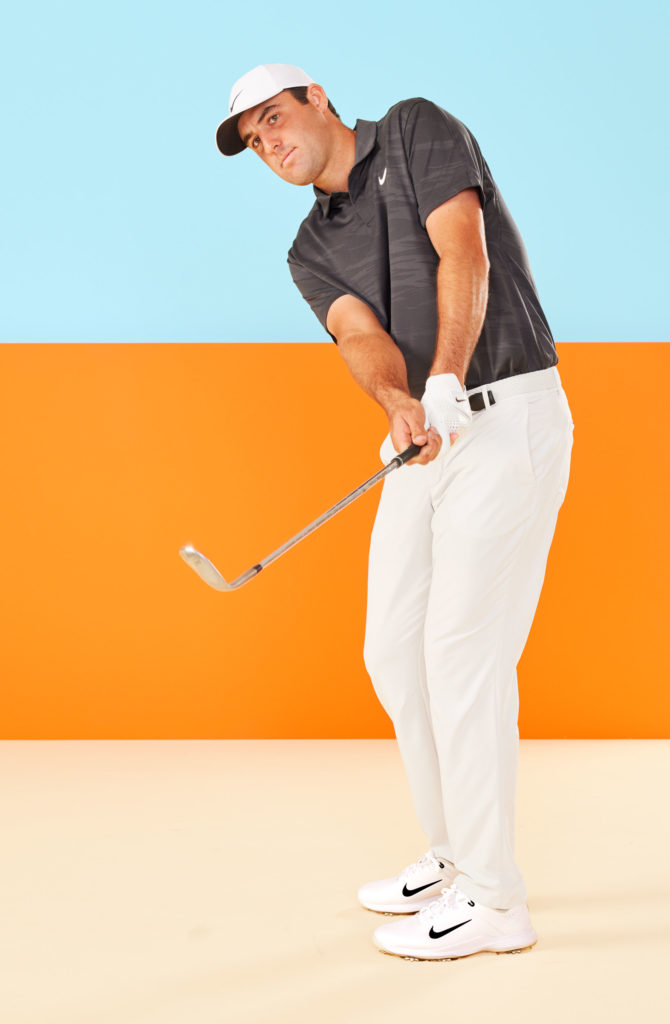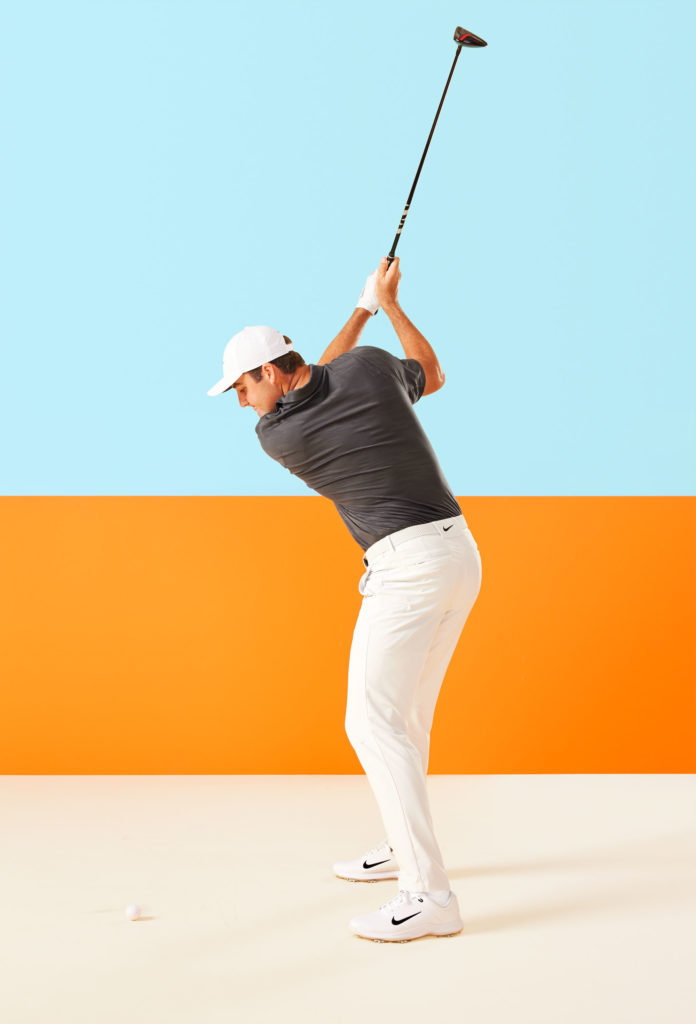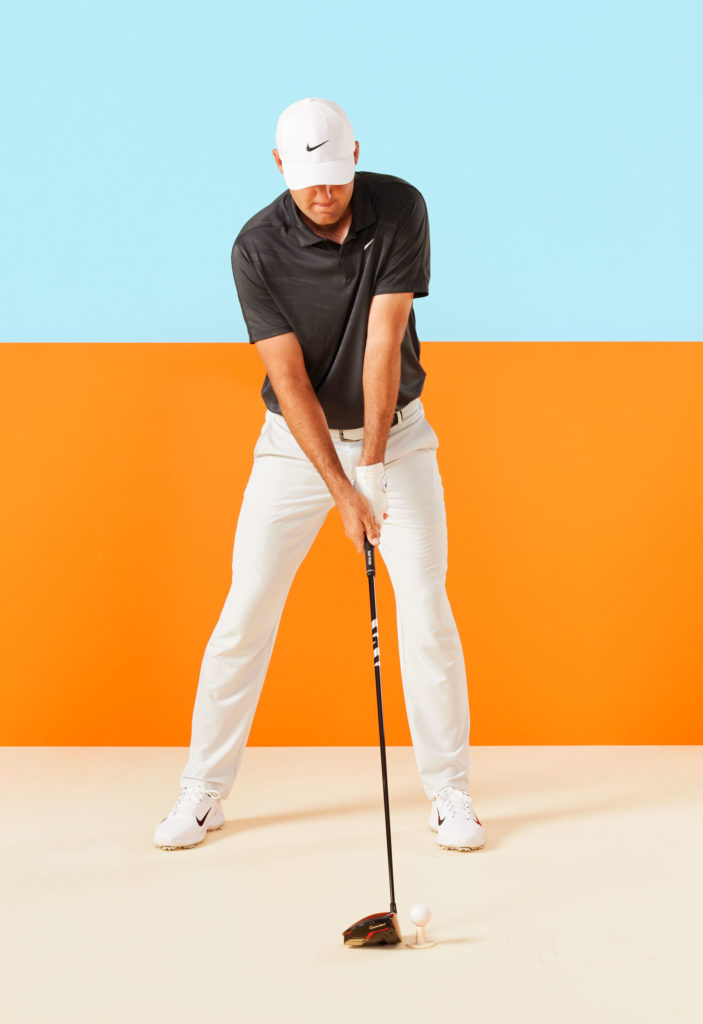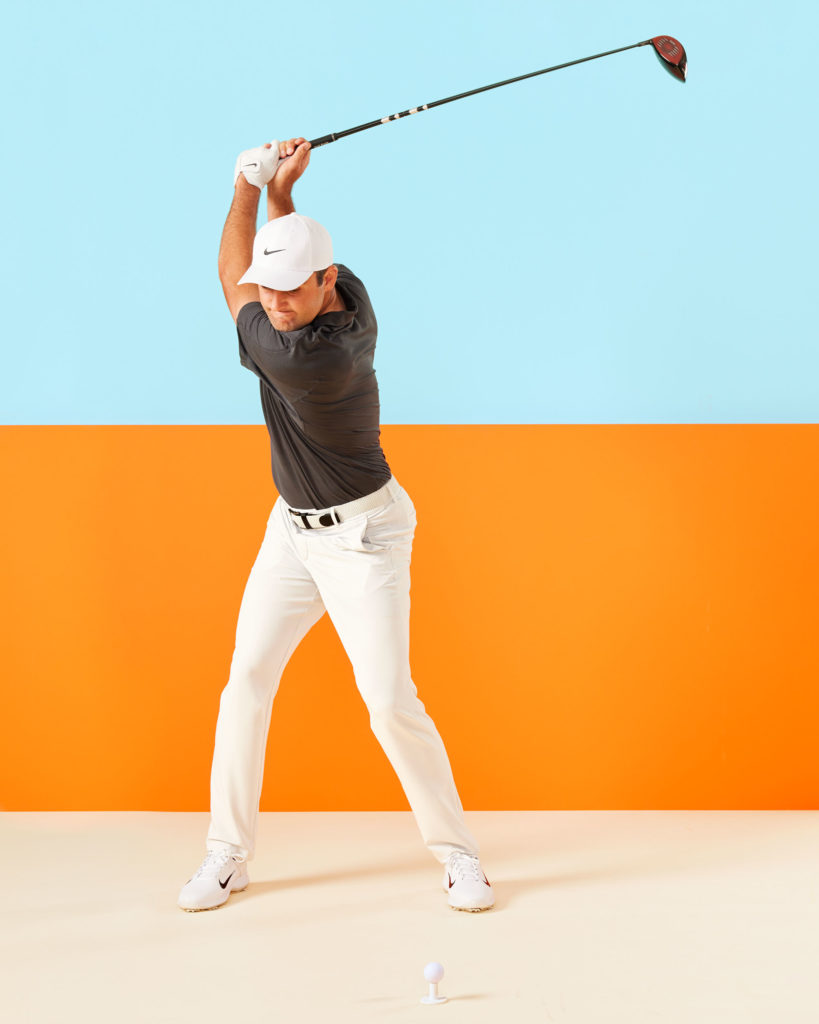From green to tee, here’s my plan for better golf.
Photographs by Jesse Rieser
I’ve only ever wanted one job: to play on the PGA Tour.
I wanted to have all the Pro V1s I could hit on the practice range, to play all those amazing courses week in and week out and to have the big staff bag with my name on it. Everything I did was to try to get one level closer to that dream.
I was lucky to have many tour players practising at my home course, Royal Oaks in Dallas, where they would come to work with my coach, Randy Smith. From the time I was 7, I got a front-row seat in a class that taught what it would take to play at the highest level, from the shots to the preparation to the attitude. Pros such as Justin Leonard, Harrison Frazar and Gary Woodland were so much better than I was, but they provided a list of things to emulate if I wanted to make it.
Then it came down to putting in the work and focusing on ascending one level at a time, from junior golf to college golf to Q school. As a professional, it has been about making small, incremental improvements to my game and body and keeping my focus on the short term. Winning multiple times, including the Masters, and getting to No.1 in the world – something beyond my capacity to dream about back in primary school – has been an incredible byproduct of keeping things simple and as normal as possible, and I’m not going to change that now.
That’s a good strategy for you, too – focus on making steady, gradual improvement. With help from Randy (one of Golf Digest’s 50 Best Teachers in America), I want to show you things that I’ve done that will help you get to your next level. You’ll get better at golf’s core skills, have a wider selection of shots for different situations and more confidence to pull them off successfully.

Connect your aim to your line
One big improvement has been my putting. It was one of my strengths growing up, but I didn’t putt that great when I first got to the PGA Tour in 2019. Getting back to some pre-putt basics, and sticking with them, has made me a lot more consistent. That’s crucial to closing out tournaments.
I break a putt into thirds and read each segment separately, paying most attention to the segment closest to the hole [above left]. Why the last third? When the ball slows down, it reacts the most to slope. Also, by reading a green this way, I can see the full picture of the route the ball will take to the hole. I find it’s much more reliable than just picking out a spot on the green where the putt will break. When you do that, you often unconsciously cheat your body towards the hole and then your alignment won’t match your read. I want to make sure my arms and feet are parallel to the putt’s start line, and my knees have some flex to take tension off my upper body [above right].
Coach Randy Smith says: Learning the game backwards
“Scottie wasn’t even a medium-length hitter until he was 16 or 17, so he had to first learn to compete with accuracy, short game and putting. He did it by thoroughly analysing every hole at Royal Oaks and thinking, Where can I roll the ball onto the green? How does the break come into play on an approach shot? Most players just read the greens when they’re ready to putt. Not Scottie. One time when he was a kid, he was playing with my son Blake at Royal Oaks and on the second hole, he hit a 5-wood into the green and almost holed it. Blake was up ahead and yelled, ‘You lipped out!’ Scottie yelled back, ‘Which side?’”


Simplify your short shots
Getting better around the greens means improving your average result. To get more consistent, rethink how you use your hands on these shots. For example, to hit a stock bunker shot, I’ll set up with the ball forward in my stance and my hands slightly behind it so the shaft is leaning away from the target. Then I’ll make a centred turn back and through [above left] with a lot less wrist hinge and release than a lot of players use. You don’t need to use your hands all that much to hit a good shot. The only time my hands are more active is if I want more spin. I’ll use them to speed up the clubhead’s release.
For a pitch shot, the same holds true. My hands aren’t all that involved. I like to hit this “hook spinner” [above right], because it makes the ball land and roll out under control. To execute it, set up with the face square and feel like you’re returning the shaft to the same position it was at address as you strike the ball. The idea is that you’re not pulling the handle and using hand action to get the club back to the ball. Keep turning your chest and rotating the club, and you’ll skid the clubhead along the ground and pick the ball clean. If you’re taking big divots when you hit pitch shots, you’re probably using your hands too much.
Randy says: Prep school
“Scottie has watched a lot of great players come through here, and he has always been a sponge. He even wore long pants to practice because that’s what the tour players wore. One day, Kris Cox was zipping shots out of a bunker while Scottie watched intently for an hour. When Kris left, Scottie jumped in and started spinning his own bunker shots, even though his wedge had all the grooves worn out. Those pros – Kris, Justin Leonard, Harrison Frazar, Gary Woodland, Martin Flores, Martin Laird, Paul Haley – helped Scottie so much. Now he has a handful of junior golfers who follow him. That’s the culture here. It’s a library you take from and you contribute to.”

Less is more with irons
I understand that when you watch a tour pro hit a 7-iron 200 yards, you want to go out and smash your irons, too. But to get the most out of these clubs, you should focus more on hitting the ball solidly. Quality of contact is the biggest difference between a tour player’s performance with an iron and even a good club golfer’s. The sound coming off the club is just different.
So how can you improve consistency with your irons? Start with your backswing. My arms only swing back as far as my body can fully turn, and the back of my left hand matches the clubface [above]. When the arms over-run your turn and you start twisting the clubface open with your hands, you have to spend the first part of your downswing getting reorganised just to make any contact with the ball.
Another tip: Randy likes to tell me to stay balanced and think of the swing as a gathering of speed and flow down through an explosion at impact. There’s no slashing or jerking or twisting on the handle from the top. A good way to avoid that is to keep your lead arm soft, even having a slight bend in your elbow when you get to the top. When you’re relaxed, you’re less likely to jerk the club down.

Flight it with your setup
When the wind, shape of the hole or competitive situation is telling me to do something other than bombing it with my driver, I listen and put that club back in the bag. Instead, I often go with a low, cut 3-wood because it’s easier to control. On my way to winning the WGC–Dell Technologies Match Play, my strategy was that position was more important than distance. On the relatively short and firm Austin Country Club, especially when holes were downwind, I aimed at the left edge of the fairway, hit it under the wind and watched it cut back in and tumble down the fairway.
To play my low cut, choke down on the handle slightly and move a hair closer to a ball teed very low. This will make your swing more vertical [above] and the attack angle more vertical like when you hit a hybrid. You might even take a small scuff of a divot. Adjusting your ball position will influence shot shape. I fade it from a mid-stance position, but when I play it back and swing more to the right, I’ll hit a low trap draw instead. You might see that at the Open Championship next month.
Randy says: Handling the stage
“When I watch my players in pressure situations, my fear is weaknesses will be exposed. But with Scottie the past two years? Nothing. He has hit some terrible shots, but the worse they are, the better his recoveries. In Phoenix, he scrambled by hooking a wedge 50 yards off gravel to 10 feet. There’s so much creativity in his game, and he wants to show it all. At the Ryder Cup, the crazier it got, the better he played. He embraces what’s going on around him and feeds off of it. That’s the way to play instead of trying to hide in a bubble. If you don’t pull a shot off, feel the disappointment but quickly move on to what you need to do next.”


Pre-set your sequence
When my driver gets out of whack, it’s almost always because of a chain reaction that starts at address. I sometimes set my hips with a bump away from the target and that causes me to slide back and squat down instead of making a good turn. Then my spine gets too upright, and the club goes up instead of around me into a position where the shaft is pointing right of my target. This across-the-line position at the top throws off the sequencing of my downswing, and I lose the sense for where the clubhead is. I try to save the shot with my hands, but that rarely ends well.
A good setup for me – and for you – is to get my hips over my knees, and tilt my belt and shoulders slightly up [above left]. From that more balanced address position, I can easily turn into my right hip socket and load onto my right leg [above right]. When you turn instead of slide, you can get your hands deeper and farther away from the centre of your chest – and you have more room and time to swing down with speed.
So get your setup right, and you can swing with confidence!
Randy says: Why it’s easy to cheer for Scottie
“The day Scottie was picked for the Ryder Cup, we’re at Royal Oaks doing some work, and his followers come out to watch like they do all the time. When we get done, he takes those kids over to the putting green. I go and give my next lesson. Almost two hours later, he’s still out there with them, and I take a video of it on my phone. At Whistling Straits, Steve Stricker comes up to me and says, ‘That kid has everything, doesn’t he?’ I say, ‘Yep, he’s a Swiss Army knife. He can fit in anywhere.’ Then I show Steve the video. ‘He could have been doing anything,’ I said, ‘but this is what he was doing.’ That’s next level.”




